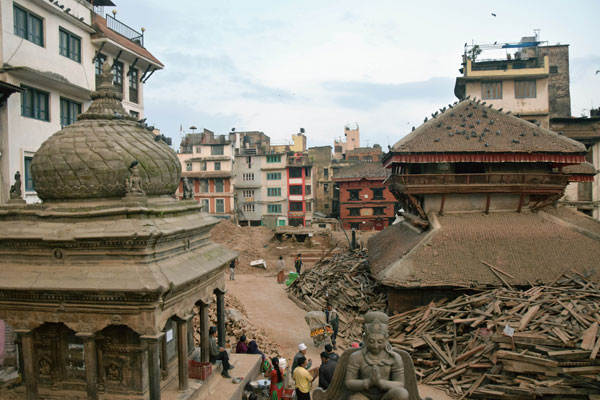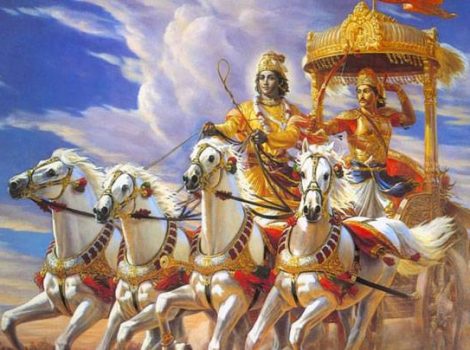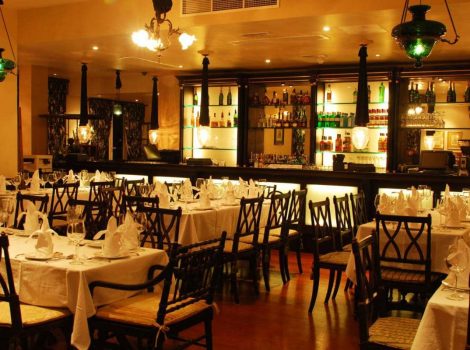Kasthamandap: a legend and legacy that left us for good.

My childhood was spent in the middle of the Kathmandu, namely, it is called Jaisideval. So I had to pass between the buildings and structures that were filled with legends and folktales that were so fascinating to a kid who believed in all the shrines and devotees. As I had to commute to come to Jamal for transportation I had to cross Maru Tole, where most of the major historical monuments are stationed. Among those of my favourite was Kasthamandap, even with my parents I always insisted on making a round of the temple once. I still don’t know till now but this monument held a special thing in my heart.
As a child, I was told that it was built with a single tree and no metal was used to build the three-storey pagoda styled temple. Not even a nail or a scrap of metal was used, it was a pure product of the wood-100% solid wood filled with many artworks in different level of the temple.
Now as an adult I am not able to see it anymore, it was destroyed completely in the earthquake on April 25, 2015. Now since it’s death the more I research about the temple the more confusing it gets.
I will try to split it into two parts one being heavenly folk tale and one nearest to the history. One thing is for certain as I have witnessed that history can only be imagined not certain.
Let’s start with the history side-
Kasthamandap is a three-story pagoda-style temple situated in the Human Dhoka Durbar Square in heart of Kathmandu city and is believed to be built out of a single tree. Kathmandu city is believed to be named after the temple itself. Kasthamandap means ‘wood-pavilion’. Although its history is uncertain, local tradition says the three-roofed building was constructed around the 12th century from the wood of a single sal tree, though recent research dates the foundations as far back as the 7th century. It first served as a community centre where visitors gathered before major ceremonies (a mandap is a 16-pillared pilgrim shelter), but later it was converted to a temple dedicated to Gorakhnath, a 13th-century ascetic who was subsequently linked to the royal family. A central wooden enclosure housed the image of the god, which was noteworthy since Gorakhnath is usually represented only by his footprint
s. In the corners of the building were four images of Ganesh. Some claim it was built around 12th century as Kathmandu was becoming the main trade route and the structure acted as a community centre where people gathered for ceremonies and other events, then later it was turned into a temple dedicated to Gorakhnath. Then there are other different shrines for different gods in the building on the first floor. then there is a pair of bronze lions guard the entrance.
Another history suggests that It was built in the early sixteenth century by King Laxmi Narsingha Malla. The whole temple is built from just wood of a single tree, and covered with the shrine. The name of the capital city is named after this temple.
Once a year a huge ceremony is performed in the temple. On that day people gather around the temple, and they stay up all night. The people share the legendary stories about the temple and enjoy themselves with different varieties of foods. Everyone is allowed to visit inside the temple, but people are not allowed to take photographs inside the temple. The temple is open after midday until midnight. The unique feature of Kasthamandap has made it the most noted pagoda of Nepal.
The pagoda-style roof of Kasthamandap is, perhaps, one of the most awe-inspiring aspects of the temple: each one of the three roof levels is meticulously layered with faded terracotta tiles. The building is surrounded by a grandiose, carved wood bannister, which should be closely inspected by visitors to understand the care given to wood carving in 16th-century Nepal. The tradition of handcrafted wood pieces carries on today: the handiwork can be seen in wood shops all over the Kathmandu Valley, especially around Kathmandu and Patan Durbar Squares.
With a bit of imagination, while gazing upon Kasthamandap’s ancient splendour and sprawling pagoda roof-top, it’s easy to image Kathmandu as it was over 400 years ago when the complex was built. Although structures in Kathmandu have largely morphed into more Western (and concrete) styles, Kasthamandap’s artistic construction remains an important testament of Nepal’s rich cultural heritage in terms of building design. The preservation of the wooden temple’s cultural and aesthetic value is a priority both locally and internationally as Kasthamandap used to be a part of the UNESCO World Heritage Site of Kathmandu Durbar Square.
So, it is quite confusing for you as a reader and for me as a writer to specify the exact date or the history of this magnificent architecture.

Now to the other part of the history, our country is built upon folklores, myths and legends. Legend has it that the entire structure of Kasthamandap was built by the wood of a single Sal Tree. The story states that Saint Gorakhnath attended the chariot procession of Machhindranath in human disguise. Unfortunately, he was recognized by a tantric who cast a spell on him imprisoning him for eternity in the Kathmandu valley. Desperate to free himself from imprisonment, Gorakhnath made a deal with the tantric who needed sufficient materials for building a wooden temple. A giant Sal tree grew in his land which he (tantric) used to construct the temple of Kasthamandap. The temple is also said to have been dedicated to Gorakhnath. The idol of Gorakhnath inside the temple is somewhat confusing as he has always been represented by footprints.
Kasthamandap is a three-storied temple enshrining the deity of Goraknath – (Sanskrit for Gau+Raksha+Nath: Cow+Protect+Lord, ie, The Lord who protects cows) – a form of the god Shiva. It was built in the 16th century in a Pagoda style. It is said to be one of the oldest wooden buildings in the world. The name of Kathmandu is a derivative of the Kasthamandap. It was built under the reign of King Laxmi Narsingha Malla and an interesting legend is attached to its wooden construction. The story narrated is about Gorakhnath, a disciple of Machindranath (Nepal Bhasa: Janamaadya). Gorakhnath was spotted by a Tantrik in human form, during the chariot procession of his guru Machhindranath (Nepal Bhasa: Janamaadya). The Tantrik held him under a spell and sought his help. Once the boon was bestowed, a huge tree started growing at the location where the present temple exists. With the wood of this single tree, the Tantrik built the Kasthamandap temple.
There is another legend as well regarding the missing pinnacle of the temple. The builders of the temple are said to have promised the gods to erect a pinnacle or summit as soon as the price of the oil and that of salt became an equal amount. However, that never happened and the pinnacle was never erected in the temple.
One thing to remember that the tree in the folklore that it was called KALPA BIRSHA.
One thing I have realized is it was never built as a form of a temple but a community centre where traders used to meet. It was a stock exchange of those days. Later on, as my investigation ends the temple of Goraknath was erected after King Prithvi Narayan Shah conquered the city and at its four corners the four statues of Ganeshas namely, Ashok Binayak, Jal Binayak, Karya Binayak and Surya Binayak were stationed.
Apart from this, the interior is decorated with the skilled craftsmanship with the story of Ramayana and Mahabharata.

Kasthamandapa used to be one of my favourite places to be in and I was always fascinated by its interior. I myself have spied and scanned every place my eyes can gaze on if any metal was used to build the structure and I found none. This Pavillion was considered to be the oldest known wooden building in Nepal. It endured the 1934 earthquake and was later renovated in 1966 but could not hold the powerful earthquake of 2015.


I would like to say that it died on that day leaving me and us nothing but the memories. But, the legend still lives on and whatever the real story of the Pavillion was it will remain a mystery as most of the mythical places and architecture building lies in Nepal.

The Government of Nepal has started to rebuild the structure but whatever effort they will try they will never be able to reconstruct the history. Although they have claimed that 70% of work has been completed and the architect has been build according to the traditional way, I highly doubt it will be that way. Anyway, it is an effort we all should praise for the project.
One question remains in my mind is -it used to UNESCO heritage site, after the rebuild of the site will it be marked the same or else?
The following song was shot at the kasthamandap in 1971.(no offense and I am not promoting any sort of illicit substance use)






